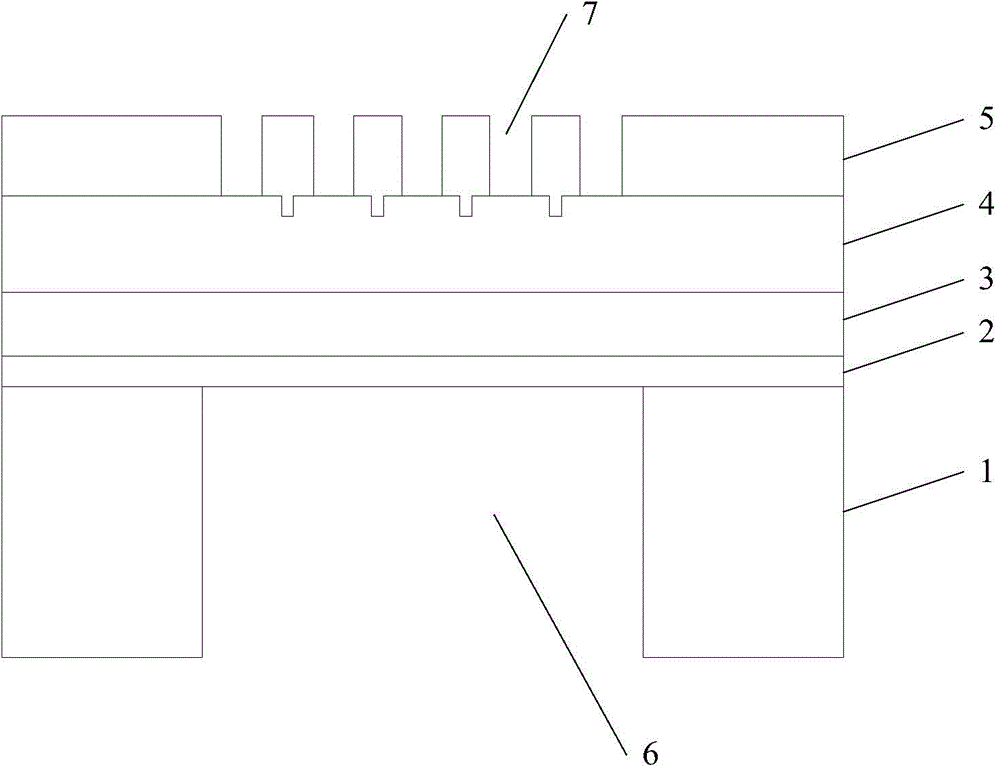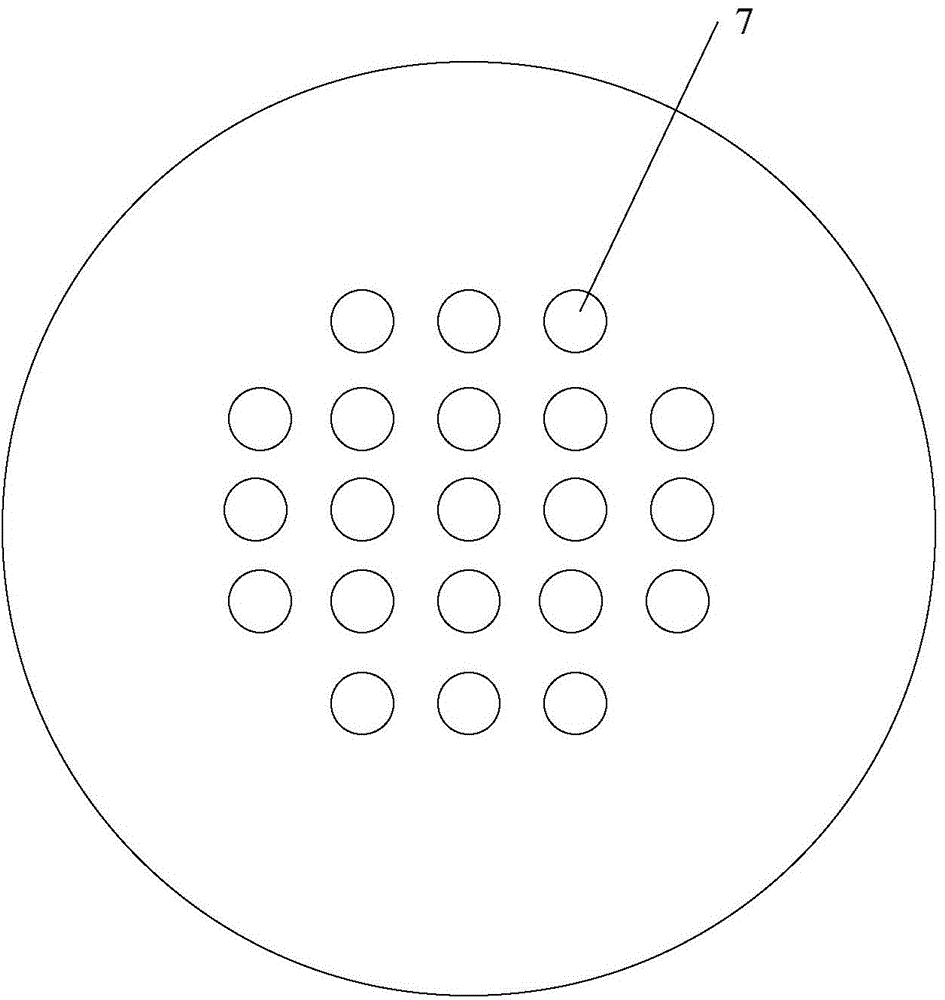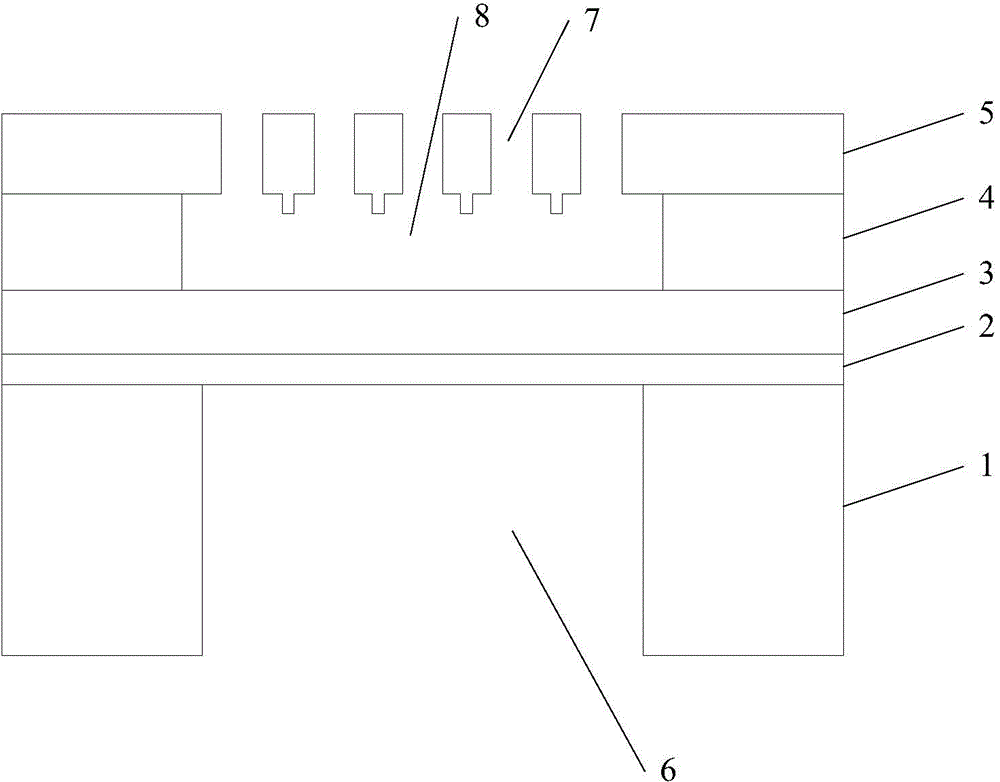Method for reducing stickiness in manufacturing process of micro-electro-mechanic-system microphone
A micro-electro-mechanical system and manufacturing process technology, applied in the field of micro-electro-mechanical system microphone manufacturing process and semiconductor manufacturing process, can solve the problems affecting the yield rate of microphone products, and achieve the effect of improving the yield rate and reducing the occurrence of stickiness
- Summary
- Abstract
- Description
- Claims
- Application Information
AI Technical Summary
Problems solved by technology
Method used
Image
Examples
Embodiment Construction
[0027] The present invention will be further described in detail below in conjunction with the accompanying drawings and embodiments. It should be understood that the specific embodiments described here are only used to explain the present invention, but not to limit the present invention. In addition, it should be noted that, for the convenience of description, only parts related to the present invention are shown in the drawings but not all content.
[0028] exist Figure 5 A first embodiment of the invention is shown in .
[0029] Figure 5 It is the implementation process 500 of the method for reducing the stickiness generated in the manufacturing process of MEMS microphones in the first embodiment of the present invention. figure 1 is a schematic cross-sectional view of the general structure of a MEMS microphone before media release. Such as figure 1 As shown, the MEMS microphone includes: a silicon substrate (SI) 1 with an acoustic back cavity 6, an oxide film (OX) ...
PUM
 Login to View More
Login to View More Abstract
Description
Claims
Application Information
 Login to View More
Login to View More - R&D
- Intellectual Property
- Life Sciences
- Materials
- Tech Scout
- Unparalleled Data Quality
- Higher Quality Content
- 60% Fewer Hallucinations
Browse by: Latest US Patents, China's latest patents, Technical Efficacy Thesaurus, Application Domain, Technology Topic, Popular Technical Reports.
© 2025 PatSnap. All rights reserved.Legal|Privacy policy|Modern Slavery Act Transparency Statement|Sitemap|About US| Contact US: help@patsnap.com



